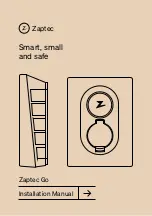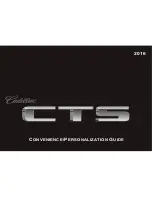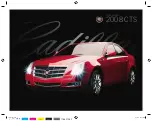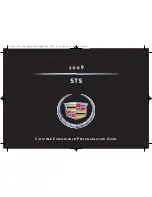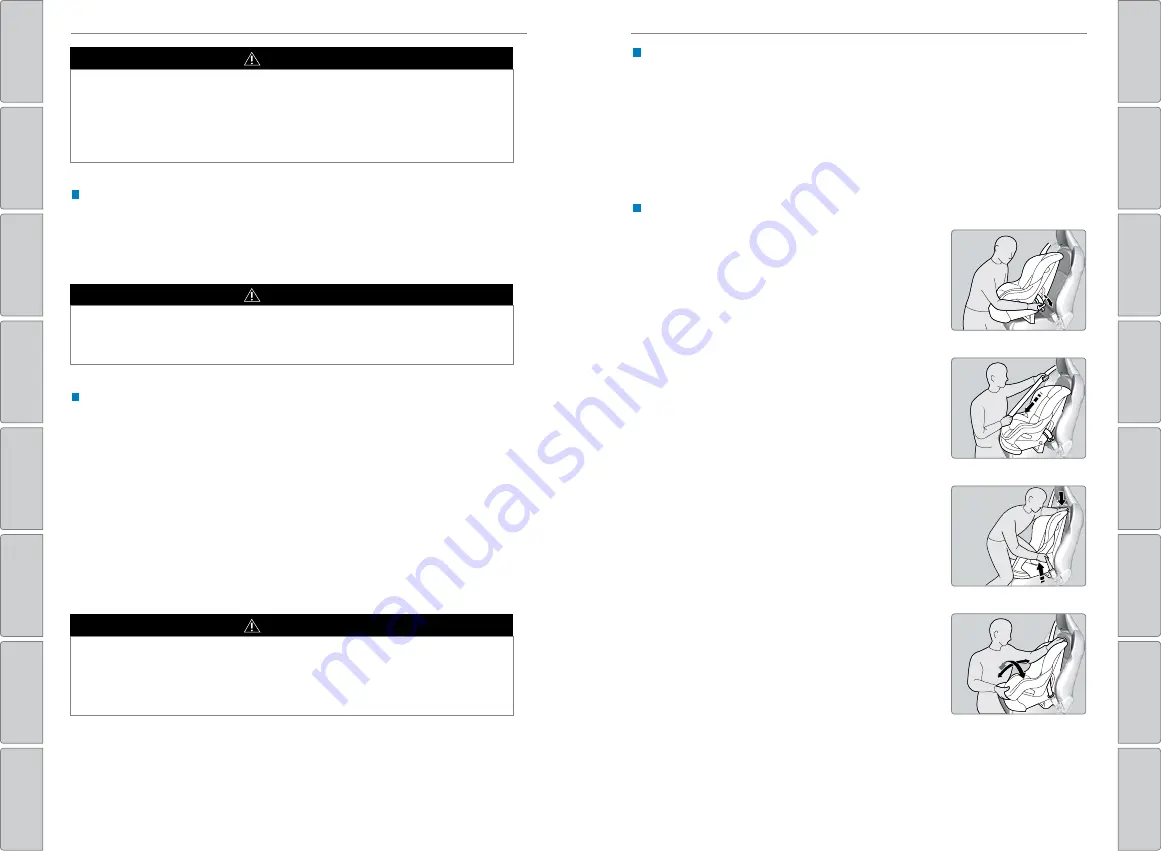
14 |
| 15
SAFETY
SAFETY
Protecting Infants
An infant must be properly restrained in a rear-facing, reclining child seat until the
infant reaches the seat maker’s weight or height limit for the seat, and the infant is
at least one year old.
Because rear-facing child seats should not be used in this
vehicle, you should never carry an infant in this vehicle.
Children who are unrestrained or improperly restrained can be seriously
injured or killed in a crash.
Any child too small for a seat belt should be properly restrained in a child
seat. A larger child should be properly restrained with a seat belt, using a
booster seat if necessary.
WARNING
Placing a rear-facing child seat in the passenger’s seat can result in serious
injury or death during a crash.
Never install a rear-facing child seat in this vehicle.
WARNING
Protecting Smaller Children
If a child is at least one year old and within the weight range indicated by the child
seat manufacturer, the child should be properly restrained in a firmly secured
forward-facing child seat.
Since this vehicle does not have a back seat, Honda recommends that you do not
carry a child, age 12 or under, as a passenger.
This is because placing a forward-facing child seat in the passenger’s seat can
be hazardous, even with advanced front airbags that automatically turn the
passenger’s front airbag off.
If you choose to ignore our warnings and transport a small child in this vehicle,
be sure to move the passenger seat as far to the rear as possible, and follow the
instructions and guidelines in the following pages.
Placing a forward-facing child seat in the passenger’s seat can result in
serious injury or death if the front airbag inflates.
If you must place a forward-facing child seat in the passenger’s seat, move
the vehicle seat as far back as possible, and properly restrain the child.
WARNING
Selecting a Child Seat
Important considerations when selecting a child seat
Make sure the child seat meets the following three requirements:
• The child seat is the correct type and size for the child.
• The child seat is the correct type for the seating position.
• The child seat is compliant with Federal Motor Vehicle Safety Standard 213 or
Canadian Motor Vehicle Safety Standard 213.
Installing a Child Seat with a Lap/Shoulder Seat Belt
1. Move the passenger seat to the rearmost
position.
2. Place the child seat on the passenger seat.
3. Route the seat belt through the child seat
according to the seat manufacturer’s
instructions, and insert the latch plate into the
buckle. Insert the latch plate fully until it clicks.
4. Slowly pull the shoulder part of the belt all the
way out until it stops. This activates the lockable
retractor.
5. Let the seat belt completely wind up into the
retractor, then try to pull it out to make sure the
retractor is locked. If you are able to pull the
shoulder belt out, the lockable retractor is not
activated. Pull the seat belt all the way out, and
repeat steps 4 – 5.
6. Grab the shoulder part of the seat belt near the
buckle, and pull up to remove any slack from
the lap part of the belt. When doing this, place
your weight on the child seat and push it into the
vehicle seat.
7. Make sure the child seat is firmly secured by
rocking it forward and back and side to side; little
movement should be felt.
To deactivate a lockable retractor, release the
buckle and allow the seat belt to wind up all the
way.



























